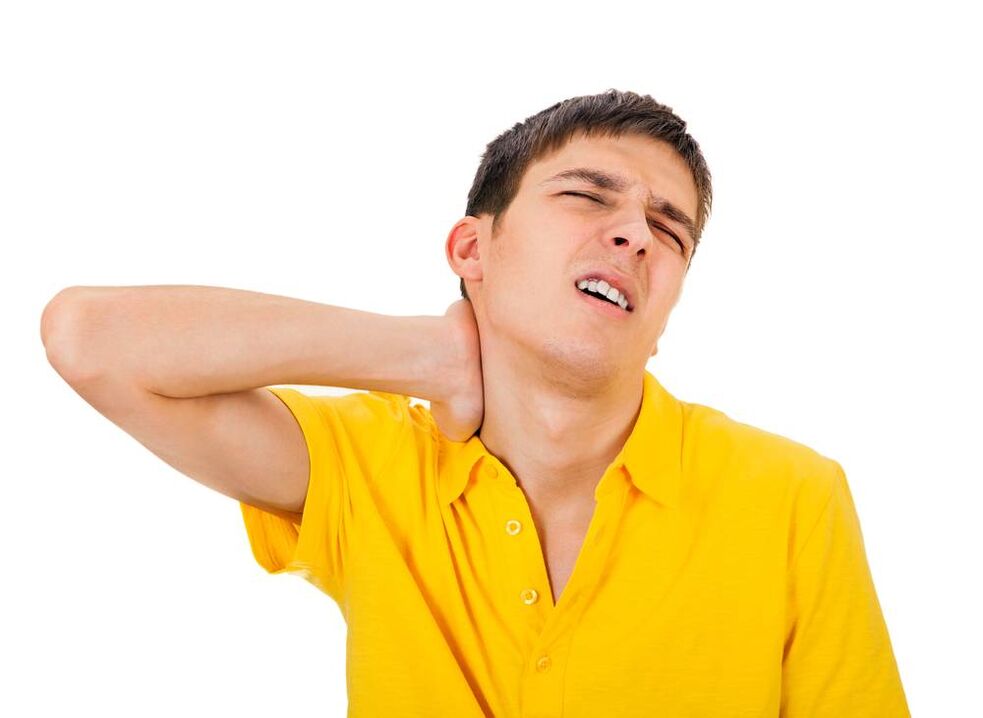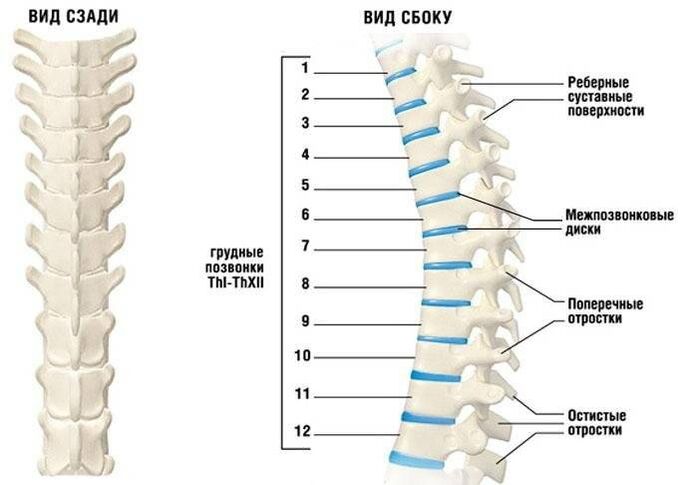Currently, according to health statistics, most people over 25-30 years old complain about the symptoms of cervical joint disease.The disease affects this spine more often than others.The pathology is a progressive degenerative process that affects the intervertebral disc and spine in the neck.The disease is common in the same male and female.This is a dangerous and complex form of osteoarthritis, because the large blood vessels provide the brain and a large number of nerve ends located in the neck.Violation of conservation and blood flow leads to a decline in the brain for oxygen and nutrients.

Signs of the disease
Symptoms of osteoarthritis of the cervical spine are more pronounced than other parts of the spine, even with small lesions.This is due to the fact that in the neck, the vertebrae are located close to each other and the discs have small height.Such anatomical characteristics contribute to the fact that with osteoarthritis, nerve ends, spinal cord, blood vessels are often compressed.
General symptoms:
- Pain syndrome;
- Weaknesses and reducing sensitivity at the above limbs;
- limited neck movement;
- violate the coordination of movements;
- regular dizziness;
- general weaknesses;
- The decline in the function of cognitive organs (hearing, vision, touch, flavor).
The pain is often located more in the neck, bringing them behind the head, shoulders, arms.The limbs on the pain if the spine is pinched by damaged vertebrae, responsible for their conservation.The pain in the back of the head is due to spasms of the neck muscles attached to the occipital bone and violates blood circulation in this area.
The weakness of the hand is observed in the patient if the nerve spine is associated with the pathological process to ensure the conservation of the muscle structures of the above limbs.The restoration of mobility and a typical crisis when the neck is rotated or tilted if the growth of the bone appears on the neck vertebra, the height of the discs is reduced, the joints between the vertebrae are affected.
The vertebrae in the neck have horizontal processes forming a channel in which the artery eats the brain.With osteoarthritis of the cervical spine, the vertebrae are moved, the connective tissue is developing on them.This leads to the compression of the cervical artery, the decline in the blood supply for the cerebellum and the back of the brain.Therefore, a person who is dizzy regularly, coordinates the movements and common weaknesses are disturbed.In advanced cases, if the artery is associated with the pathological process or being promoted, the supply of cerebellum blood, occipital and brain body becomes significantly worse.In this case, the function of hearing and vision organs, numbness of the tongue and fingers is reduced.
Signs of the disease depend on eight vertebrae affected by deformities or inflammation.Disorders of sensitivity and motion leads to damage to the brain roots that some vertebrae affect.Depending on this, the following manifestations of cervical joint disease are observed:

- The first vertebrae - the neck and the occipital part of the head are numb, their sensitivity decreases;
- The second pain in the crown and the neck is felt;
- The third pain is perceived and the sensitivity is reduced in the neck where the spinal spine is squeezed, the intensity of the taste feeling is reduced and impaired words;
- The fourth pain radiates in the shoulders, Scapula, patients disturbed by heart attack, breathing disorders and negative muscles of the neck reduced;
- The fifth pain is observed in the neck, given on the outer surface of the shoulder;
- The sixth pain in the neck is given into the shoulder's tongue, feeling in the forearm and thumb;
- Saturday - pain given to shoulder blades, back shoulders, forearms and fingers (from Monday to Wednesday);
- Eighth - Pain spreads from neck to shoulders, forearms and little finger.
Depending on the circulation rate of the lesions, the degrees of the joints of the cervical spine are different.This is not the stage of the disease, but the severity of the symptoms, due to the common pathological process, it affects the vertebra.
- At the first level, clinical symptoms are absent or minimal manifestation.Patients complain about mild pain, strengthening during the movement of the head.The treatment that starts at this stage of the disease will be effective.However, people often ignore the worrying symptoms or do not feel them, so they do not consult a doctor.
- The increase of pathological processes enhances symptoms.In the second phase, the pain became more pronounced, giving the above limbs, shoulder blades.At this stage in the development of degeneration, the height of the disc decreases, so the nerve fibers are pinched.This becomes the cause of increased pain.The second degree of osteoarthritis of the cervix is characterized by the appearance of headaches, decreased in good, reducing the ability to work.
- The third level of cervical joint disease is distinguished by the formation of a herniated disc of the affected Intervertebral disc.The ability of the neck to exercise is limited, with the touch, the patient feels severe pain.With the spread of the pathology, the pain becomes unchanged, radiating the above limbs.The tension of the muscles attached to the occipital bone is perceived.Patients complain about dizziness, weakness, paralysis.
- The fourth level of cervical joint disease is diagnosed when the disc is completely destroyed by a deform process.It is replaced by fiber tissue, resulting in a significant limitation of mobility.The spinal cord and blood vessels flying in the neck are affected.Such changes are characterized by a significant decline in providing blood to the cerebellum and occipital of the brain.Excessive hunger leads to violations of coordination of movements, hearing impairments, vision, language, and speech disorders.
Treatment method
Timely search for a doctor when the first alarming symptoms appear, the uncomfortable feeling in the neck, the reaction from the nervous system will prevent the progression of degenerative changes.Treatment of cervical bone includes a complex of treatments.Among them:
- take medicines;
- massage;
- Physiotherapy physical therapy;
- Physiotherapy procedures.
Drug therapy
Doctors prescribe anti -inflammatory drugs to reduce pain intensity, reduce inflammation and swelling of the spine.Chondroprotectors restores damaged cartilage in Intervertebral disk.Musorelaxants relax the muscles of the neck, reducing spasms.The drug to improve blood flow helps to continue providing blood to the brain.B Vitamin activates metabolism in nerve tissues.With intense pain, the doctor may prescribe painkillers.If the patient has a clear pain syndrome, analgesics are taken into a vein, after the pain is reduced, they switch to the tablet.
Physiotherapy method
Physiotherapy is an effective way to combat the osteoarthritis of the cervix.It is required to treat this disease by using such techniques, according to which the following results are achieved:
- Pain intensity decreases;
- The restoration of bones, cartilage and muscle tissue is activated;
- Spasms and stress in the muscles are removed;
- A process of inflammation is stopped;
- The supply of oxygen and nutrients to the affected area and brain improves.
The most effective treatment for osteoarthritis is the following types of procedures:
- Electricity of the drug (the area affected by electric shock, in addition to activating blood flow and restoring tissues, improving the provision of drugs of drugs to the tissue affected by degenerative process);
- Ultrasound therapy (metabolism in the infected area is activated, analgesic, stopped inflammation);
- Magnet therapy (reduces swelling from the affected area, helps reduce pain intensity);
- Laser treatment (improving blood circulation during pathology, has anti -inflammatory effects).
Medical physical education
The exercises are specified during the time when the acute manifestations of the disease are stopped.During gymnastics, it should not feel uncomfortable and aches.The complexes should be done when it is persistent to prevent recurrence.

- Take a position on the stomach, raise your head and body, relying on your hands.The back is straight, deep and even.Log back to a position for one or two minutes, then slowly take on the starting position.The repeated amount is 3.
- The position lies on the stomach, hands along the body.Slowly turn around, try to touch your ears to the floor.Repeat 6 times on each side.
- Sitting or standing, tilting your head on the respiratory tract, trying to reach your chin to your chest.When he exhaled, smoothly, raised his head, raised his eyes on the ceiling.The repeated number is 10-15.
- A good exercise to strengthen the cervix is pressing the forehead into it.To achieve the effect, you need to press the palm on the forehead and forehead on the palm for 30 seconds.Repeat three times.
- Turn your head into a circle.Do the exercises slowly, smoothly.In each direction - 10 revolutions each.The appearance of dizziness in movements is unacceptable.If this happens, you should stop immediately.
Massage
The course is prescribed by a doctor during the time without acute pain, only one expert with medical education can proceed.With such a disease, do not contact professional.
The treatment effect of the collar massage area:
- Blood and lymphatic flow in the affected area improved;
- Relaxing muscles, spasms are removed;
- Pain intensity decreases.
Surgical intervention
The activity is shown if conservative therapy does not bring results within six months, the patient is tortured by intense pain, signs of damage to nerve fibers and marrow disease are observed.If the bones and joints of the cervix carry out complications, there is a threat of a stroke, there is a strong spin of the spinal cord, it is necessary to work.
According to the indications, they use the following types of surgical interventions:
- Endoscopic removal surgery - eliminating part or the whole disc;
- Surgery to remove - remove bone ligaments and overcurrent growing particles of bone tissue (often combined with shaping methods - the establishment of artificial panels to expand the spinal cord);
- The laser vapor of the disc - the incident of the disc of the disc with the laser beam simultaneously with the destruction of its destroyed fragments;
- Nucleoplasty -Plasty -Plasma -Accmentation because of the endoscopy, a long and thin needle used, put into a disc, an electrode with a cold -produced effect is transferred to the destructive position.
The neck is a complex organ in which large blood vessels, the spinal cord passes through.They are very vulnerable, so they use surgery in no more than 5% of cases.Surgical treatment is often accompanied by the development of complications.Among them:
- The inflammatory process in the tissue or membrane of the spinal cord;
- osteoarthritis;
- The formation of scars leads to narrowing artery and spine channels.
Operating on the cervical spine is very complicated and requires a long recovery time.The recovery of patients after surgery takes six months or more.
Prevent
To prevent the growth of cervical joint disease, that is necessary:
- Monitor the position of the spine and neck;
- Lead a dynamic lifestyle, more moving;
- When performing physical exercises, it is necessary to be careful, to observe the accuracy of implementation, because even small injuries can affect the condition of the musculoskeletal system;
- Take care of the exact position of the body while sleeping, buying orthopedic mattresses or surgery;
- Equipped with an exact workplace where a person spends a lot of time;
- regularly participate in physical culture;
- Monitoring the diet, ensuring all the useful minerals needed for the bone fortress, especially magnesium and calcium;
- Continuing to undergo distribution tests to promptly detect osteoarthritis.
Prevention will help prevent changes in degeneration in the cervical spine, protect from pain, dizziness, numbness in the limbs and other unpleasant symptoms.

















































